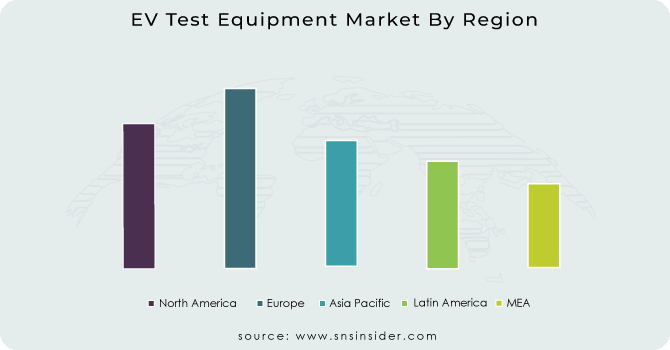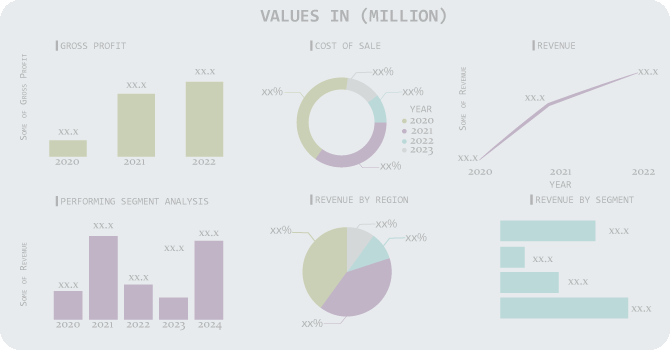EV Test Equipment Market Report Scope & Overview:
EV Test Equipment Market Size was valued at USD 100.80 million in 2023 and is expected to reach USD 620.32 million by 2031 and grow at a CAGR of 25.5% over the forecast period 2024-2031.
A vehicle that runs on electricity. For electric and hybrid automobiles, an EV tester is a must-have tool. For the electric vehicle, the acronym EV is used. Both repair shops and vehicle inspectors must adapt to the unique requirements of electric vehicles because of the electric motors, high-voltage batteries, rectifiers, and other components not found in ordinary, non-electric vehicles with combustion engines.

Get More Information on EV Test Equipment Market - Request Sample Report
There must be a high-voltage system and the proper equipment in the workshop if someone wants to offer service, maintenance, repairs, or general inspection for an electric car. EV test equipment is utilized to evaluate the functionality of various electric vehicle components, including the battery, the motor, and others, to ensure that the automotive parts remain competitive, deliver guaranteed performance, provide customer safety, and satisfy customers.
Arbin introduced a brand-new battery testing system with three electrodes in September of 2021. General Motors is the company that was responsible for developing and licensing the new patented three-electrode (3E) coin cell design.
MARKET DYNAMICS:
KEY DRIVERS:
-
The development of new technology for batteries.
-
Widespread implementation of electronics in motor vehicles.
-
The expansion of the industry is being driven by the rising consumer demand for electric vehicles.
-
Government requirements to decrease environmental effects have driven automakers to develop e-vehicles.
RESTRAINTS:
-
A greater increase in the expense of equipment requiring advanced technologies.
-
It is anticipated that a reduction in subsidies for electric vehicles will slow the expansion of the market.
OPPORTUNITIES:
-
Improvements were made to electric vehicle charging stations.
-
Technical developments in test equipment.
-
The increasing demand for onboard diagnostic tools presents a potential opportunity for expansion.
CHALLENGES:
-
Balancing the high cost of test equipment with its great performance might have an impact on the market.
-
A lack of standardized process for the development of improved EV testing instruments.
IMPACT OF COVID-19:
Since then, the COVID-19 pandemic has had an impact on the worldwide economy in a number of nations. As a result of the lockdown, travel restrictions and business closures have occurred, which has disrupted the global supply chain for the electric vehicle testing equipment market. Because of the lockdown and the limits imposed by the government, the operations of service, repair, and overhaul have been hampered, which has resulted in a reduction in the requirements for EV test equipment. In addition, the enterprises are experiencing disruptions in their output as a consequence of the lockdown and the norms of social separation. In addition, there has been a decrease in the need for replacement parts due to the fact that there is currently a reduced need for maintenance due to the fact that everyone is working from home. The COVID-19 conference had a beneficial impact on the market for electric vehicles, as evidenced by the fact that the number of sales of electric vehicles has increased more than it did in the year prior. After the pandemic is over, there will be a renewed interest in electric vehicle (EV) testing equipment due to the expansion of the EV market.
Market, By Propulsion Type:
The global market has been divided into BEV, HEV, and PHEV Based on the propulsion type segment. It is anticipated that the BEV market would experience significant expansion in the years to come. Because more attention is being paid to the development of charging infrastructure, battery electric vehicles (BEVs) are favored over plug-in hybrid electric vehicles (PHEVs).
Market, By Vehicle Type:
The global market has been divided into passenger cars and commercial vehicles Based on the vehicle type segment. It is anticipated that the passenger cars market would experience significant expansion in the years to come. Commercial vehicle sales and product offerings are expanding. A large portion of the market's growth can be attributed to commercial vehicles.
Market, By Application:
The global market has been divided into EV Component & Drivetrain, EV Charging, and Powertrain based on the application segment. It is anticipated that the EV Component & Drivetrain market would experience significant expansion in the years to come. Due to advancements in battery technology and the expansion of charging infrastructure around the world, EV charging test equipment is projected to take the lead in the future.
MARKET SEGMENTATION:
By Propulsion Type:
-
BEV
-
HEV
-
PHEV
By Vehicle Type:
-
Passenger cars
-
Commercial vehicles
By Application:
-
EV Component & Drivetrain
-
EV Charging
-
Powertrain
REGIONAL ANALYSIS:
A surge in the demand for electric vehicles across Europe is expected to result in Europe holding a significant portion of the worldwide market for test equipment for EVs in the not-too-distant future. The swift growth of electric vehicle component manufacturers across the region has also resulted in an increase in the availability of testing equipment for the EV market. There is a significant presence of original equipment manufacturers and tier-1 suppliers in Europe. As a result, the market for test equipment for electric vehicles in Europe is likely to experience a significant expansion in the near future. Due to a growth in the manufacturing of electric vehicles across the area, it is anticipated that the Asia Pacific would hold a substantial share of the global market for test equipment for EVs, followed by Europe.

Need any customization research on EV Test Equipment Market - Enquiry Now
REGIONAL COVERAGE:
-
North America
-
The USA
-
Canada
-
Mexico
-
-
Europe
-
Germany
-
The UK
-
France
-
Italy
-
Spain
-
The Netherlands
-
Rest of Europe
-
-
Asia-Pacific
-
Japan
-
south Korea
-
China
-
India
-
Australia
-
Rest of Asia-Pacific
-
-
The Middle East & Africa
-
Israel
-
UAE
-
South Africa
-
Rest of Middle East & Africa
-
-
Latin America
-
Brazil
-
Argentina
-
Rest of Latin America
-
KEY PLAYERS:
Arbin Instruments, Dewesoft, FEV group Gmbh, Atesteo Gmbh, AVL List Gmbh, Blum-Novotest Gmbh, Burke Porter Group, Horiba Ltd, Chroma Ate, and KUKA AG are some of the affluent competitors with significant market share in the EV Test Equipment Market.
Arbin Instruments-Company Financial Analysis

| EV Test Equipment Market | Details |
|---|---|
| Market Size in 2023 | US$ 100.80 Million |
| Market Size by 2031 | US$ 620.32 Million |
| CAGR | CAGR of 25.5% From 2024 to 2031 |
| Base Year | 2023 |
| Forecast Period | 2024-2031 |
| Historical Data | 2020-2022 |
| Report Scope & Coverage | Market Size, Segments Analysis, Competitive Landscape, Regional Analysis, DROC & SWOT Analysis, Forecast Outlook |
| Key Segments | • by Propulsion Type (BEV, HEV, PHEV) • by Vehicle Type (Passenger cars, Commercial vehicles) • by Application (EV Component & Drivetrain, EV Charging, Powertrain) |
| Regional Analysis/Coverage | North America (USA, Canada, Mexico), Europe (Germany, UK, France, Italy, Spain, Netherlands, Rest of Europe), Asia-Pacific (Japan, South Korea, China, India, Australia, Rest of Asia-Pacific), The Middle East & Africa (Israel, UAE, South Africa, Rest of Middle East & Africa), Latin America (Brazil, Argentina, Rest of Latin America) |
| Company Profiles | Arbin Instruments, Dewesoft, FEV group Gmbh, Atesteo Gmbh, AVL List Gmbh, Blum-Novotest Gmbh, Burke Porter Group, Horiba Ltd, Chroma Ate, and KUKA AG |
| Key Drivers | •The development of new technology for batteries. •Widespread implementation of electronics in motor vehicles. |
| RESTRAINTS | •A greater increase in the expense of equipment requiring advanced technologies. •It is anticipated that a reduction in subsidies for electric vehicles will slow the expansion of the market. |

